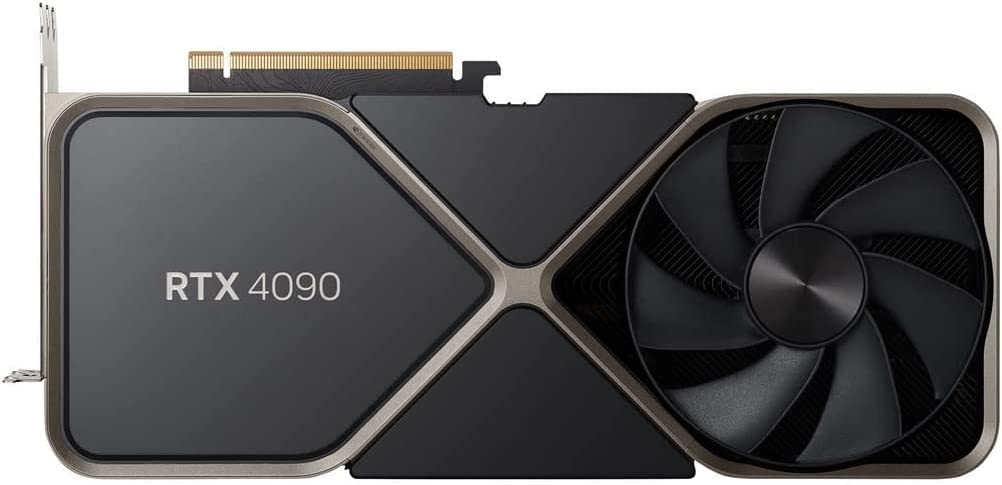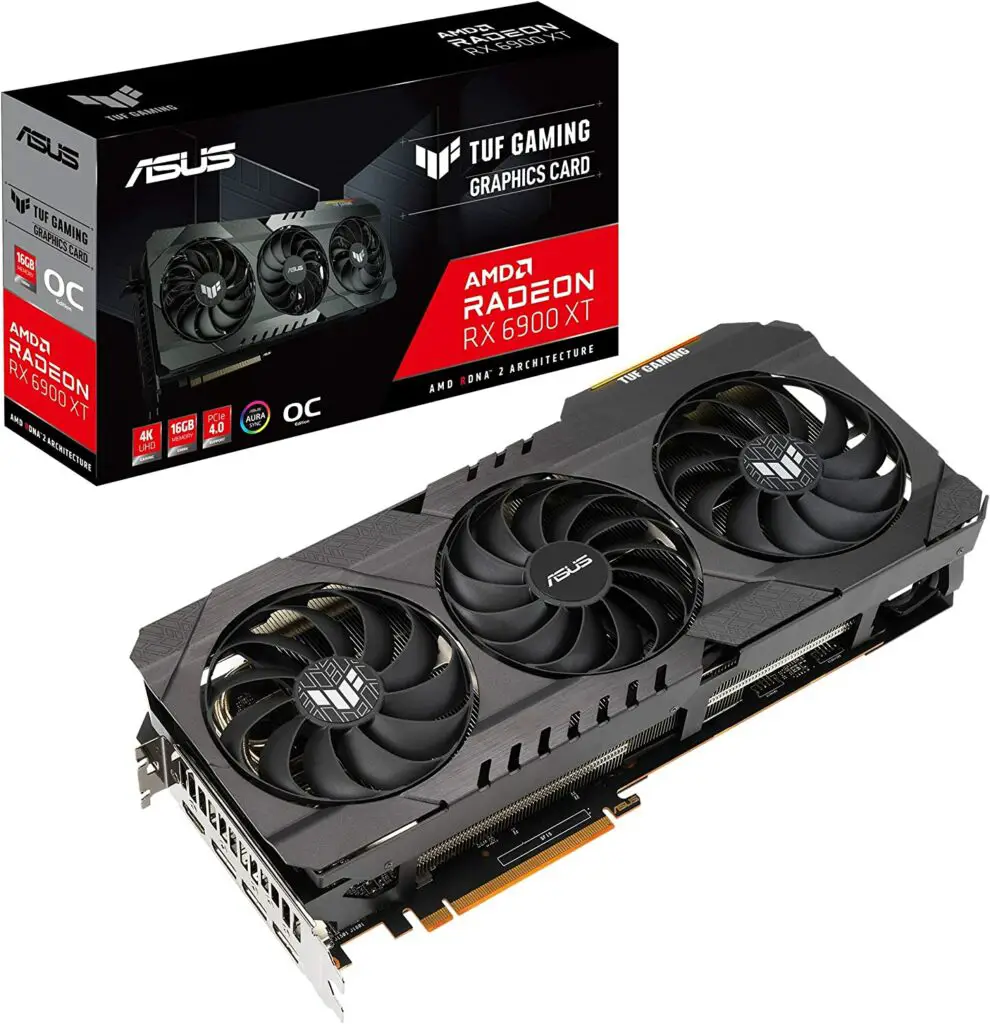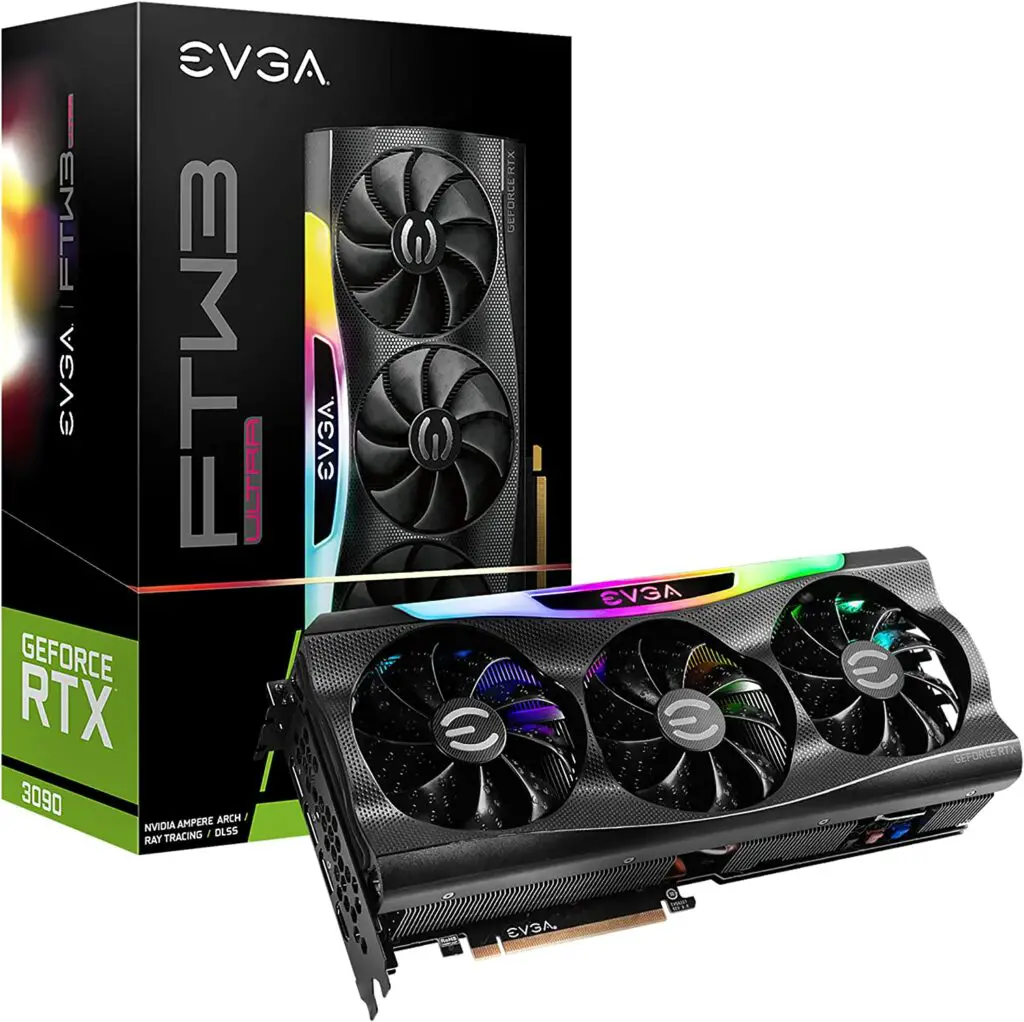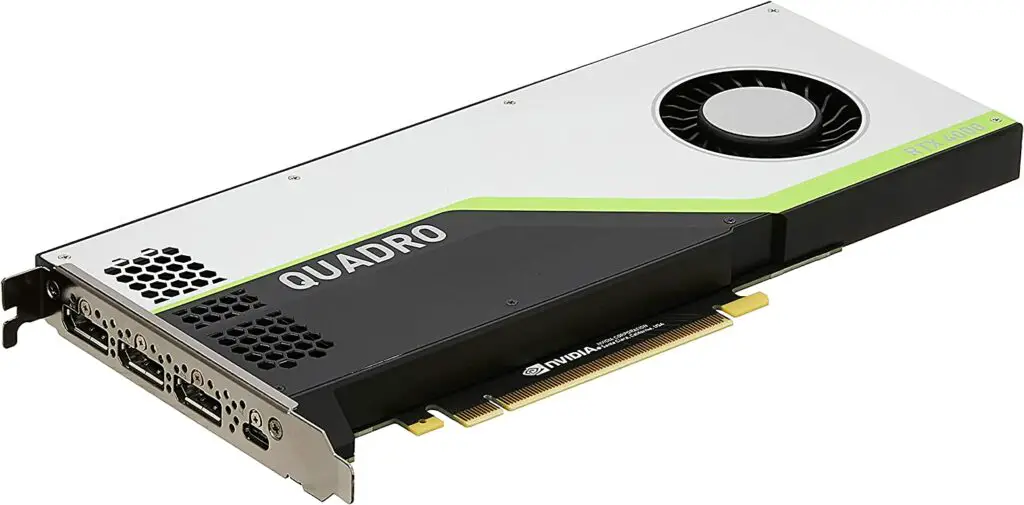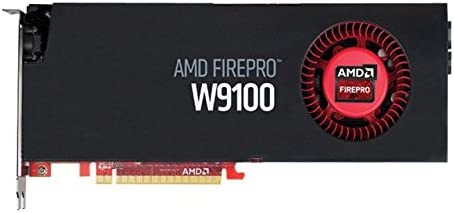Before you dive into 3D animation creation you need to search for the Best GPU for Blender. This falls in the most popular programs that are used for content creation. For running your software suit you have to invest in a compatible graphics card. For your help we finalist some top picks, get a look at their review and buying guide to make your purchase easier!
Due to its versatility Blender is used for a variety of productions from high to low budget. Provides you a variety of solutions to perform your tasks such as; simulating, compositing, video editing, modeling, motion tracking, rigging and rendering. Having so many functionalities it is a heavy software which requires a powerhouse of computer hardwares.
Like the other software developers, Blender’s team has already maintained a list of system requirements. Your system will not differ much from a regular workstation or computer but still needs some specific requirements. Starting from our best overall product which is Nvidia Titan RTX you can trust it to experiment with Blender. If you want the best budget GPU for blender and your usage of Blender is very basic then you can go for NVIDIA Quadro RTX 4000.
When it comes to the specs of a GPU, for Blender the most necessary thing is CUDA cores. You should buy a graphics card with as many cores as you can to get your desired performance. For a basic work you can go for 8 GB VRAM but for the advanced level production you need 32 GB or at least 24 GB. For coping up with resource consuming tasks quickly buy a GPU with up to 2550 MHz clock speed.
Our Recommended list of the Best GPU for Blender
- NVIDIA GeForce RTX 4090 Founders Edition Graphics Card
- ASUS TUF Gaming AMD Radeon RX 6900 XT Graphics Card
- EVGA GeForce RTX 3090 FTW3 Ultra Gaming
- NVIDIA Quadro RTX 4000
- AMD FirePro W9100 Graphics Card
- NVIDIA Titan RTX Graphics Card
Blender GPU Requirements:
- VRAM: Min. 8 GB, Recommended 32 GB
- Memory Type: GDDR6X
- Clock Speed: Min. 1066 MHz, Recommended 2500 MHz
- Fans: Min. 2, Recommended 3
- Ports: At least 1 x DisplayPort and 1 x HDMI
- RGB: Optional
Blender Vs Maya
Blender and Maya both are used for 3D graphics development, let’s look at those pointers that make them different from each other!
- Both tools are released in the same year, 1998
- Blender is freely available, Maya is a licensed product
- Blender is better for small startups, Maya fits for large studio production
- Blender is based on GNU which is general public license, Maya is Trialware
- Blender is open source enables everyone to edit it according to their choice, there are many studios in Maya pipeline
- Learning curve for blender is steep than Maya, and it is moderate for Maya as well
- For the customization of Blender you need to use python, and MEL enables editing in Maya
- Rendering out graphics easier at Blender but a bit challenging for Maya users
Nvidia Vs AMD
Nvidia and AMD are 2 prominent names of the graphics card manufacturing industry and both can be chosen for Blender. Creative softwares like Blender use both Optix/CUDA and OpenCL. For rendering due to the support of CUDA APIs and Optix, Nvidia leads over AMD. If you are indecisive then we recommend you for low price you should go for AMD and for precise performance invest in a Nvidia’s GPU.
1- NVIDIA GeForce RTX 4090 Founders Edition Graphics Card
The top-tier GeForce GPU is the NVIDIA RTX 4090; performance, effectiveness, efficiency and AI-powered visuals all take a big leap forward. You are ready to experience virtual worlds by having incredible detail of gaming with huge performance. You get productivity that you have never seen before, and there are new ways that you can create.
Offers the best gameplay and content creation experience as possible. All you get due to its 24 GB of GDDR6X memory and NVIDIA’s architecture Ada Lovelace. The Ada architecture allows high ray tracing performance that mimics how light behaves in reality and shines in all splendor. You are now ready to explore new and extraordinary details of the virtual worlds. Take your experience to a whole new level by utilizing the strength of the RTX 40 Series and Ray Tracing cores of 3rd Generation.
The 22 titles at 1440p, 1080p, and 4K resolutions were used to determine the average gaming power. Performance is dramatically increased by the advancement of innovation in AI-powered visuals which is known as DLSS. DLSS 3 employs AI to create high-quality frames and this is possible due to the support of Optical Flow Accelerator and Tensor Cores. The lowest latency and best responsiveness are provided by NVIDIA Reflex and RTX 40 GPUs for the maximum competitive advantage.
Reflex, that was created for the measuring and optimizing latency of the system. Offers the gamers the best target acquisition, aim precision and reaction times. Take snapshots, record live feeds, and share them with your friends. You should frequently update the drivers, and tweak settings of the games. With GeForce Experience, you can do everything. It is a GeForce graphics card’s indispensable buddy.
Comparison:
Founders editions of the Nvidia RTX 4090 and RTX 4080 are comparable. By getting RTX 4090 you get 8 GB more VRAM and 28% better gaming performance. However, RTX 4080 is 45% cheap and has 29% lower TDP than RTX 4090.
Pros:
- Extremely powerful
- As compared to the previous gen it get big jump
- Relatively low power consumption
- Temperatures are supremely control
- DLSS 3 impressive generation
Cons:
- Massive size
- Expensive
- Can bottleneck with some older processors
2- ASUS TUF Gaming AMD Radeon RX 6900 XT Graphics Card
If you are looking for an AMD GPU for blender look no further than RX 6900 XT by ASUS. The graphics cards of the AMD Radeon RX 6900 Series immerse you in the action and support DirectX 12 Ultimate. Extremely fast frame rates and impressive 4K images are provided by AMD Radeon RX 6900 Series graphics cards. With innovative AMD Infinity Cache, powerful new compute units
Having up to 16 GB of dedicated GDDR6 memory, you may enjoy amazing gaming experiences. Capacitors of dependable military quality were chosen for the power design of the card. By utilizing the Auto-Extreme which is an automated manufacturing process, these and other components are soldered to the PCB. Each graphics card complies with exacting requirements thanks to perfect connections and the reduction of human error.
The graphics cards of the AMD Radeon RX 6900 XT Series immerse you in the action and support DirectX 12 Ultimate. Its Axial-tech fan design comes with a blade count on all its 3 fans. The enormous new heatsink, with more fins as well as surface area than earlier models, is optimized for the fan layout growth especially.
The center fan’s rotating orientation is reversed to support the specialized functions of the center and auxiliary fans. This lowers air disturbance inside the cooling array, which improves thermal performance all around. We used MaxContact technologies to polish the heat spreader’s surface and increase smoothness at the microscopic scale in order to transfer heat away from the device and into the heatsink array.
Comparison:
From RX 6900 XT and RX 6800 XT you can pick RX 6900 XT for 13% better gaming performance. For the 24% cheap price you should give preference to RX 6800 XT over RX 6900 XT.
Pros:
- Killer upgrade
- Great performer
- Fast FPS
- Easy to install
- Supports Tweak II
Cons:
- Expensive
3- EVGA GeForce RTX 3090 FTW3 Ultra Gaming
The EVGA GeForce RTX 3090 offers an entirely new level of graphics performance at 8K resolution. It is monumentally powerful in every aspect possible. Driven by the NVIDIA Maximum current architecture, which boosts computer vision and AI performance with new streaming multiprocessors, improved Tensor and Ray Tracing Cores.
The EVGA GeForce RTX 3090 Series redefines what is meant by ultimate performance. Especially when combined with the latest in architecture, management, and overclocking with EVGA Precision X1. The graphics cards from the EVGA GeForce RTX 30 Series deliver unbeatable performance! This next-generation graphics are the pinnacle of speed and style.
Thanks to their new, simplified design, ARGB choices, better fan bearings, and precisely calibrated cooling. Hundreds of L-shaped cooling systems with various apertures make up the EVGA iCX3 heatsink. As a result, the cooled air can circulate silently and uniformly over the entire heat sink. Extreme performance is redefined by the EVGA GeForce RTX 3090.
The performance offered by these new graphics cards is completely new and they are incredibly powerful in every way. They are built on the NVIDIA Ampere design, which increases ray tracing and AI performance. This graphics card has ideal specifications for gaming and creation and this is also compatible with Ryzen 9 7950X Cards, Ryzen 7 5800X3D
Comparison:
EVGA RTX 3090 FTW3 and GTX 1660 are comparable, you can buy RTX 3090 over GTX 1660 for 204% better gaming performance, newer release, 18 GB more memory and Nvidia SLI support. However, GTX 1660 is preferable over RTX 3090 for 66% lower TDP and addition of DVI-D dual link port.
Pros:
- Excellent 1440p and 4K gaming
- Cold and silent
- Overclocking-friendly features
- Software support for RGB
- Ray tracing
- Ultra-fast memory
Cons:
- Massive size
- High power consumption
4- NVIDIA Quadro RTX 4000
For the minimum graphics card for blender Quadro RTX 4000 is a great option. The NVIDIA Turing GPU architecture is combined with the most recent memory and display technologies in the NVIDIA Quadro RTXTM 4000. To give you the highest features and performance in a solitary PCI-e form factor. Enjoy improved smoothness with photo-realistic rendering, quicker performance with AI-enabled applications.
Provides you the ability to more efficiently and affordably build detailed, lifelike VR experiences across a wider range of workstation container configurations. The NVIDIA Quadro RTX 4000 has 8 GB of GDDR6 memory to support big datasets. You get 288 Tensor cores to speed up AI, and 36 RT cores to speed up ray tracing. It has 3 DisplayPort 1.4 ports with HDR compatibility and the newest VirtualLink connector. Which makes it easier to connect to next-generation VR HMDs.
This connector can also power a DisplayPort panel using the accompanying USB Type-C to DP converter. Additionally, you may install big digital companies dealing with higher density and at a cheaper cost when used in combination with NVIDIA Quadro Sync II. Experience the most recent NVIDIA Turing GPU architecture and lightning-fast graphics RAM for quick, interactive, professional application performance.
It gives designers the ability to expedite their creative processes with quicker time to insight and quicker time to solution. The Quadro RTX 4000 is built to handle the most demanding AEC, DCC, AI, VR, 3D modeling and graphics tasks. With Quadro RTX 4000, connecting to next-generation, elevated VR displays is made simple, and lets the designers work in the virtual worlds.
Comparison:
Here we have the NVIDIA Quadro RTX 4000 and ASUS GTX 1630, you can buy RTX 400 for better average gaming, 4 GB more VRAM and 2 DisplayPorts. For the 82% cheap price, G-Sync support and 1 HDMI port you can buy a GTX 1630.
Pros:
- Ray tracing
- Good for deep learning,
- Comes with advanced shading
- Supports all resolution
Cons:
- Not justifies price
5- AMD FirePro W9100 Graphics Card
For designing the best PC for blender you can trust AMD FirePro W9100 for graphics capabilities. The FirePro W9100 video card offers the best 4K performance in next-generation workstations. It is built for the most strenuous tasks. Users may take on the most complicated engineering and creative tasks at a completely new degree of detail. You can enter into the entirely new phase of efficiency, responsiveness, and inventiveness.
Thanks to state of the art graphics performance, incredible super-computing capability, and ultra-high definition multi-display capabilities. Only the AMD FirePro W9100 workstation graphics can give up to 32 GB of GPU RAM as of right now. The bandwidth is 320 Gbps, and the memory interface is 512 bits. You have access to huge memory performance, allowing you to load large 4K files or complete datasets into internal memory.
Direct access to the RAM makes low bandwidth transfer to and from the GPU possible thanks to DirectGMA support. FirePro W9100 GPU is the best single graphics card solution for the newer generation of high resolution visualization. Supports up to 6 4K displays through six Mini DisplayPort outputs. Utilize the combined processing capability of up to 4 AMD FirePro W9100 graphics processors in a single system to transform your next-generation workspace into a personal supercomputer.
Enables precise and reliable visual synchronization to multiple GPUs or external inputs across many platforms. Needs ATI S400 synchronization module of FirePro ; which is not included. The AMD FirePro W9100 graphics cards have OpenCL 2.0 functionality built in. Utilize its GPU’s parallel processing power to get up to 5.24 TFLOPS of processing power to speed up computationally demanding workloads.
Comparison:
We are comparing AMD FirePro W9100 and AMD Pro Duo side by side. Due to lower TDP, faster clock speed, more VRAM and 3D support AMD FirePro wins this battle. You can buy AMD pro duo than W9100 for higher floating point, pixel and texture rate.
Pros:
- 32 GB
- Stay cools
- Operation quietly
- Offers great performance
Cons:
- Lacks PCIe 4.0
6- NVIDIA Titan RTX Graphics Card
TITAN RTX fuels AI, deep learning, and artistic workflows. The best tools are required by the most demanding users. Turing GPU architecture by NVIDIA serves as the foundation for TITAN RTX, which also features the most recent Tensor Core and Ray Tracing Core technologies for enhancement of AI and ray tracing.
Plus, it is supported by SDKs and drivers of Nvidia, allowing developers, producers and researchers to work more quickly and produce higher-quality work. With 576 NVIDIA Turing made by mixing Tensor Cores offering 130 TFLOPS of AI performance, train AI models more quickly. TITAN RTX handles complicated, multi-application processes and renders extra-large models. This all performs with 72 Turing RT Cores and 24 GB of RAM for a fluid and seamless experience.
Work more quickly thanks to the 4608 NVIDIA Turing CUDA cores that accelerate complete data science tasks. Utilize 24 GB of GDDR6 RAM to process large data sets. Create on your PC and easily publish to the data center. Create massively expensive, beautifully detailed worlds and people, speed up multi-app processes, and edit 8K video in real-time.
You can handle even the most difficult projects thanks to the 72 Turing RT cores and 24 GB of RAM. Two Titan RTX cards are linked via a bridge using a 100 GB/s connection. As a result, memory capacity effectively doubles to 48 GB. Enabling you to train neural networks more quickly, handle bigger data, and work some of the largest rendering models.
Comparison:
Nvidia RTX 4090 and Nvidia Titan RTX are comparable, from these GPUs Titan RTX is inevitable than RTX 4090 for 11% cheaper price, 38% lower TDP and support of Nvidia SLI. However, for 120% better gaming performance and newer release you should buy RTX 4090.
Pros:
- 24 GB memory
- Improved Tensor cores
- Excellent 4K resolution
- Attractive design
- NVLink support
Cons:
- Expensive
- Relatively poor FP64 capabilities
Best GPU for Blender Buying Guide
Blender is a heavy tool so you must select the Best GPU for Blender carefully. A graphics card with relative specs is required to use Blender in the right way. When it comes to video card selection you can choose NVIDIA Titan RTX 900-1G150-2500-000; it’s our overall best option. Consider the below mentioned pointers and make your precise decision!
Clock Speed:
When you look at the specs list of a graphics card the most prominent point is its clock speed. A graphics card with as high a clock speed as possible will be better for Blender. The range of clock speed of the GPU that is sufficient for Blender is from 1066 MHz up to 2500 MHz. You can choose Nvidia Titan RTX, it delivers 1350 MHz that is fine for Blender, we have included options with more clock speed as per your choice.
VRAM:
Most of the users pay attention to memory since VRAM is also as important as RAM. Video memory is used to provide you high quality graphics and cope up with power consuming tasks to perform them quickly. For Blender usage the range of VRAM starts from 8 GB and it goes up to 32 GB. You can choose any GPU between this range, selection will depend upon your usage and budget.
Cores:
A desktop processor has a number of cores similarly a video card is also designed with cores. For a video card these cores are known as CUDA cores and this number is much higher than cores of a processor. Having more cores means your graphics card is as powerful and it will perform more incredibly for Blender. You can choose the Nvidia Titan RTX, it has 4608 CUDA cores and enough to perform any kind of task.
Cooling:
When you are designing a powerful computer system you must pay some attention towards its cooling system. A graphics card for Blender needs to work so hard and there are higher chances of it overheating. Always buy a graphics card with up to 3 fans, they will be sufficient for heat management of it. In our list you will see products with 2 or 3 fans, they can manage heat dissipation better, you can go for any of them.
FAQs
Is Blender Processor Heavy?
Yes, Blender is CPU intensive.
Why Does Blender Need GPU?
A graphics card for Blender is responsible for picture enhancement and reduces load for the processor.
For Blender Which Make Rendering Fast, GPU or CPU?
For Blender a video card makes rendering faster from 50 up to 1000 times as compared to the processor.

